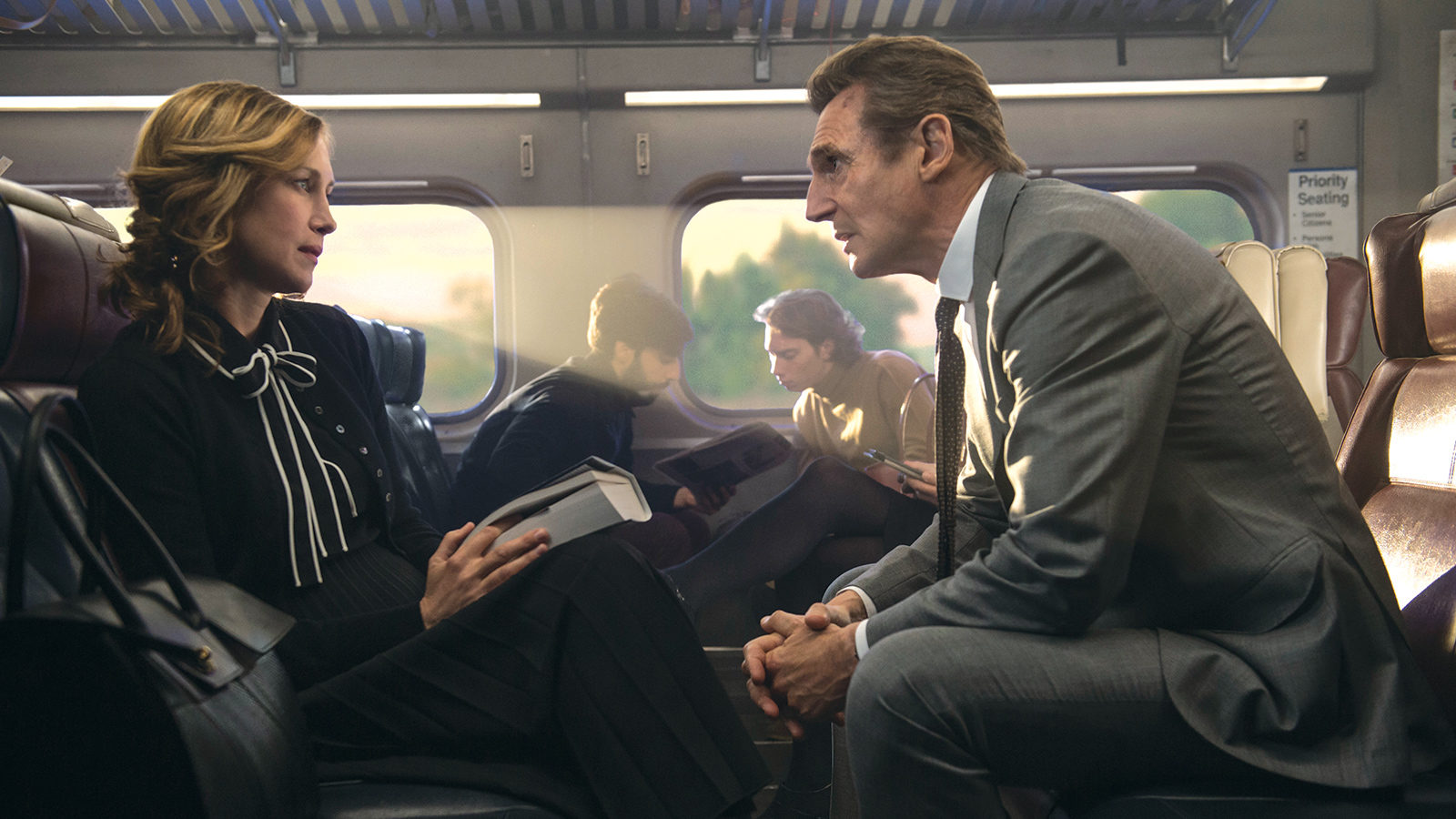Henry Gerharz | Contributor
Featured image: The Commuter ?represents the best and worst qualities of the modern action movie. | Courtesy of Film Comment
The Commuter begins on a disorienting note, with an over-ambitious montage sequence that jumps back and forth in time as we learn about this movie’s iteration of Liam Neeson. This Neeson film is about Michael MacCauley, a paycheck-to-paycheck insurance salesman who is defined by disliking his commute, arguing with his wife about finances, and reading books with his Syracuse-bound son. As far as Neeson characters go, this is one of the better ones. He’s simplistic and a little dull, but there’s a pervasive kindness and relatability to him. Oh, and he’s also an ex-cop—gotta justify his superhero antics somehow.
In the semi-interesting fifteen minutes that follow, we delve deeper into the life of Michael MacCauley. He meets his train buddies, gets fired from his sales job, gets a beer with an old cop friend, and embarks on his commute home. The people we are introduced to here are either the monopoly man, or “relatable” working folk. All of them just barely qualify as characters. The supporting actors here, especially Jonathan Banks, are noticeably overqualified for their roles. The amount of effort they put into their bare-bones characters is completely unnecessary, but thankfully does not come across as such. MacCauley then meets a mysterious woman who poses an interesting “hypothetical” for him: identify a passenger on the train who doesn’t belong and tell her who it is in exchange for 100,000 dollars in cash. After discovering this scenario isn’t so hypothetical, the movie finally begins. What’s more, it finally becomes fun.
There’s a certain visual prowess that director Juame Collet-Serra displays in The Commuter, one so distinct and imaginative it almost feels out of place with the rest of the film. Within the first fifteen minutes, there’s a shot involving shadow that is completely gorgeous and tonally poignant. Around the halfway mark, there’s a surprisingly tasteful homage to Vertigo. It is here where the The Commuter is at its strongest. In these first two acts, Serra wisely refrains from using the quick-cut shakiness that has been a mainstay in contemporary schlock action films. Instead, during the panicky high-intensity moments (normally involving Neeson running through train cars) Serra allows Neeson’s acting capabilities to convey that panic for us. The camera stays steady, the actions stay clear, and it makes these scenes, and the entire rising action for that matter, genuinely good.
Unfortunately, The Commuter doesn’t stay this good for very long. The third act of this film is the confusing, sloppy mess that is expected of these late-period Liam Neeson action pieces. It runs far too long, and has its characters shed any semblance of realism they might have once had.The once-clear action quickly devolves into a dismal final conflict: a shoddy, rapidly cut-together brawl that would normally be found in a January action release. It’s especially frustrating in this film, because I know Collet-Serra is capable of much more.
While the final act is poor, I wouldn’t say that I didn’t like The Commuter. Yes, the last ten minutes feel like they came from a Hallmark movie. Yes, the start is equally flawed. However, there’s this wonderful middle part; a part where the film doesn’t take itself too seriously, where the story is light on its toes and engaging, and where Liam Neeson tries to kill someone with a guitar. I really enjoyed that part. I would watch that part again. The Commuter isn’t Collet-Serra’s best, but it’s far from bad.


